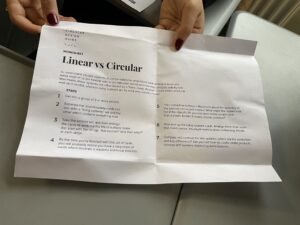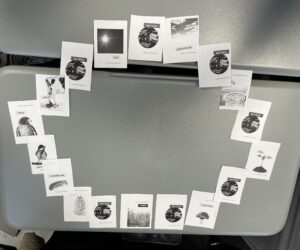Week 5 – Possessions with a Past
Design + Activism = Design activism. What does that entail? From what I’ve gathered in the lecture, it’s about reallocating resources, reconfiguring systems, and reprioritizing. It may sound simple in nature but it encompasses challenges like neoliberalism, economic recession, social injustices, political laws, and climate change. When we talk about design activism, it’s not just about solving these problems; it’s also about coming up with new ideas and ways of thinking about them, which can lead to the creation of new ontologies. In other words, design activism is both material, idea-driven, and political in nature; addressing everyday aspects of life while being motivated by concepts and insights.
A good friend of mine works as a civil engineer, and I’ve noticed that the lessons from the Standing Rock protest and camp can provide an excellent example for the field of civil engineering. Much like the goal of creating a new community of change, civil engineers can adopt an approach that focuses on the local community, working closely with residents to plan and build infrastructure projects that suit their needs and cultural heritage. In civil engineering, understanding a site’s history, as highlighted at Standing Rock, is equally important to make wise choices that honour the area’s heritage and environment. Furthermore, the idea of promoting shared, sustainable practices in design echoes the significance of using eco-friendly methods and involving the community in the engineering process. This commitment to being conscientious custodians of the environment aligns seamlessly with the core principle of stewardship in civil engineering, guaranteeing that infrastructure serves the needs of future generations.  Linear vs. Circular workshop description. Photo by Christina Yang.
Linear vs. Circular workshop description. Photo by Christina Yang. Life of a plastic water bottle. Photo by Christina Yang.
Life of a plastic water bottle. Photo by Christina Yang. Linear system. Photo by Christina Yang.
Linear system. Photo by Christina Yang. Circular system. Photo by Christina Yang.
Circular system. Photo by Christina Yang.
A circular economy, as defined by the Ellen MacArthur Foundation, embodies an economic framework focused on regeneration and resource optimization while minimizing waste. The role of storytelling is pivotal in understanding how products are created and used, potentially transforming production processes and post-use scenarios. Recognizing the influence of capitalist societies, labour, and their environmental impacts is essential for achieving both social and environmental justice. In this week’s workshop, “Circular Redesign – From Linear Economies to Circular Ones,” the interconnectedness of social and environmental justice is reinforced. The proposed shift from a linear “cradle-to-grave” approach to a more comprehensive “cradle-to-cradle” model aligns with the transition to a circular economy, aiming for regeneration and redemption, with a strong emphasis on sustainability and waste reduction. In our group’s exploration, we delved into various pathways concerning waste and repurposing, with a focus on examining food packaging for the second part of the workshop.
 Group exploration: Food Packaging. Photo by Christina Yang.
Group exploration: Food Packaging. Photo by Christina Yang.
Reference list
Lee, Deishin, and Lionel Bony. “Cradle-to-Cradle Design at Herman Miller: Moving Toward Environmental Sustainability.” Harvard Business School Case 607-003, May 2007.
Harkness, H. (2023) Theme 2_Lecture 2A [PDF], Stories of Stuff: Social Justice and Environmental Design. University of Edinburgh.